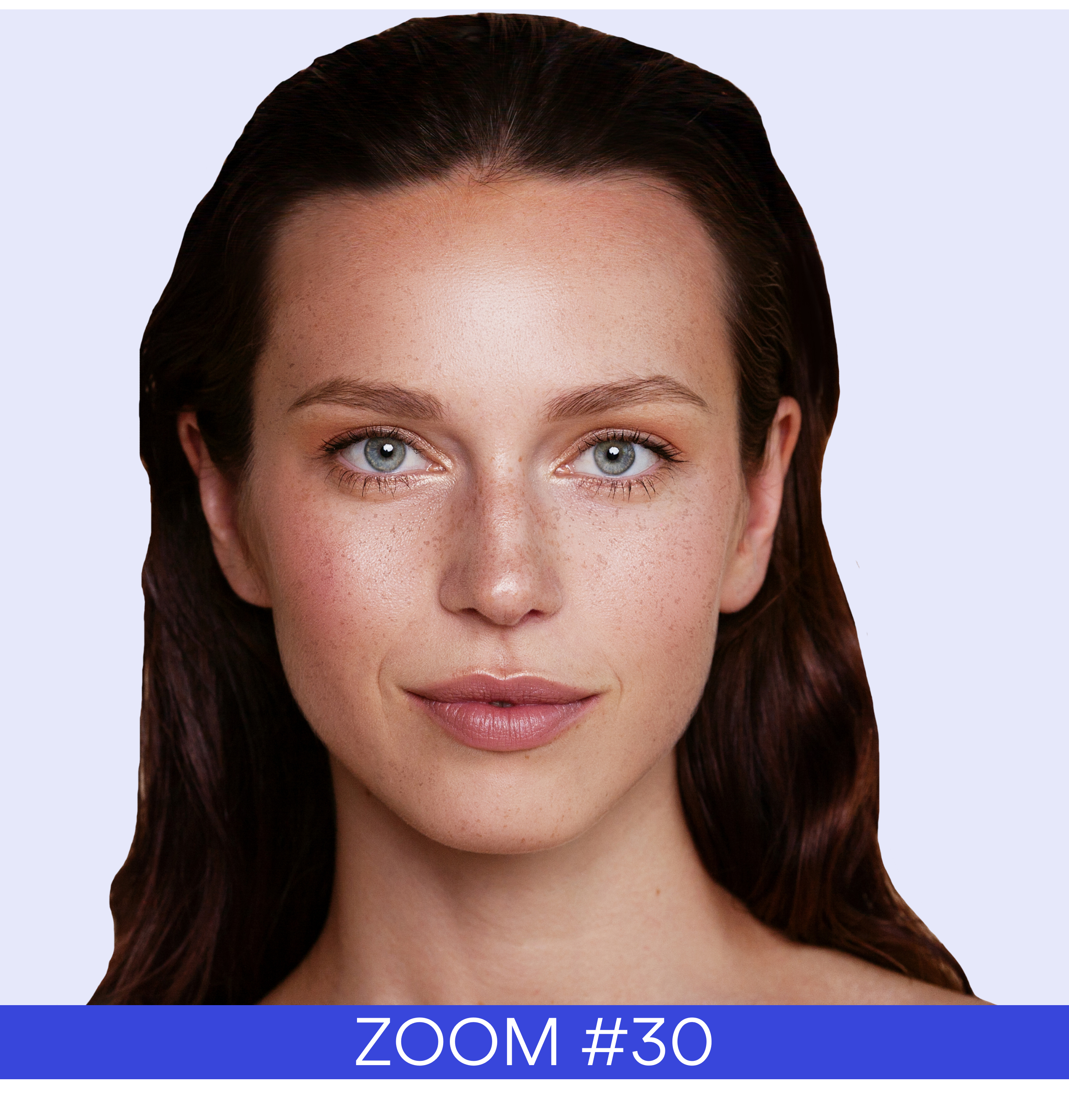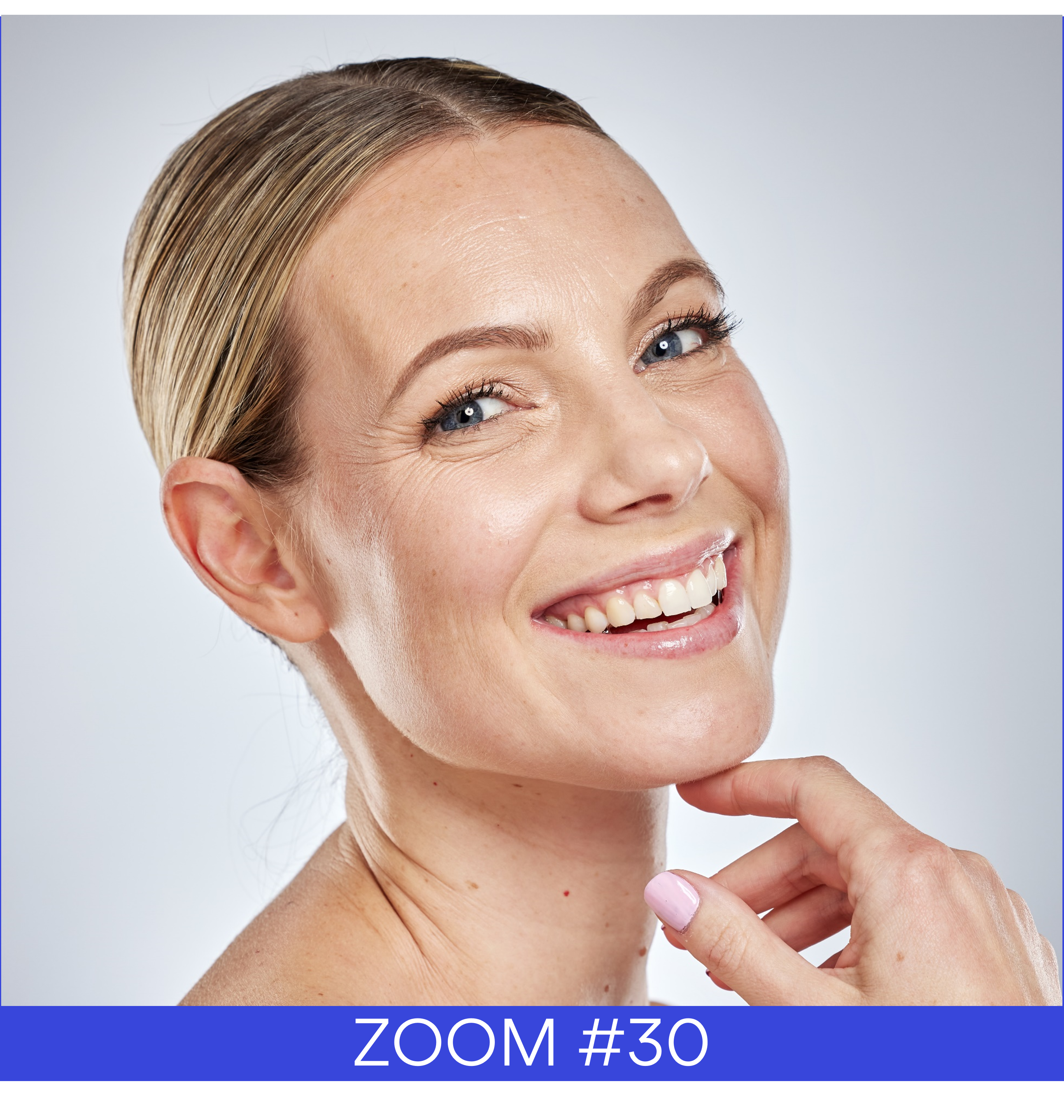Pro-age
The cosmetics industry is shifting away from anti-ageing claims towards a more positive approach to ageing. Consumers now seek a ‘pro-ageing’ philosophy that prioritizes looking healthy overlooking younger. Brands are embracing a new vocabulary centered on renewal, regeneration, and glow to align with this shift. The focus is on supporting the ageing process rather than fighting signs of ageing, providing emotional pleasure and sensorial experiences through skincare as ‘pro-longevity’ life enhancers.
The exposome process beyond the Ageing Mechanisms
The factors influencing skin ageing are now widely understood, focusing on two main categories: intrinsic and extrinsic factors. The 20th century delineated these as exposomes—external elements like sun exposure, pollution, diet, and lifestyle—and the biological clock, governed by our genome. For the elderly, typical signs of ageing include skin thinning, dryness, and various skin irregularities, which manifest differently based on phototype—light skin tends to thin, while dark skin thickens. UV rays, particularly UVB and UVA, cause significant dermal damage, largely through oxidative stress induced by environmental conditions.
Pro-age treatments aim to enhance blood circulation, stimulate collagen production, and redefine contours for a firmer appearance. They employ moisturizing ingredients for immediate and long-term effects, bolstering skin elasticity and gently exfoliating dead cells. Some ingredients act as lymphatic drainers, reshaping cheekbones and providing definition.
These changes affect human temporality, particularly impacting the epidermis-dermis-hypodermis exchanges within the skin. The increasingly intricate nature of modern lifestyles has shifted how anti-ageing treatments are globally employed. The industry is proactively integrating cutting-edge technologies like genomics, AI, to develop, produce, and market these targeted skincare solutions, meeting regulatory demands and aligning with consumer needs.
The Studies of Skin Age Perception
Taking a closer look at the realm of anti-ageing products, they constitute the most abundant and precisely targeted category within cosmetic offerings. These products, apart from varying in regulatory status across different regions, generally claim multiple effects on various mechanisms:
- They aim at specific targets such as skin relief, collagen, cellular communication, and the dermo-epidermal junction.
- These treatments address localized concerns like crow’s feet, lion’s wrinkles, and the contours of the face.
- They also target different skin depths, whether it’s the epidermis, dermal-epidermal junction, or the dermis itself.
- Additionally, these products are interconnected within diverse mechanisms involving cells and biochemistry, encompassing microbiota, keratinocytes, fibroblasts, melanocytes, and nervous receptors.
Beyond the conventional improvements in skin surface and structure, skincare tailored for mature skin also promises enhancements in emotional well-being and sensorial properties. Nevertheless, the visible signs of ageing continue to be meticulously studied as tangible proof of product efficacy.
These products pledge to restore tissue elasticity, redefine facial contours, and enhance plumpness and volume. The significance of specific signs of ageing varies among different ethnicities. For instance, in Asian populations, skin tone, dullness, and hyperpigmentation are commonly considered signs of ageing, whereas among Caucasians, wrinkles around the eyes and forehead hold more importance. Additionally, sagging around the mouth and jawline tends to be observed earlier in some ethnicities.
The spectrum of anti-ageing claims is expansive, encompassing notions like firmness, radiance, anti-sagging, energizing effects, barrier function improvement, increased cellular renewal, and the reduction of senescence spots.
The signs of skin ageing can be categorized into several aspects:
- Skin color and pigmentation issues like redness, tone, radiance, age spots, and dark circles under the eyes.
- Skin topography concerns including crow’s feet, furrow lines, upper lip and under-eye wrinkles, and skin roughness.
- Skin structure variations encompassing thickness, the dermal-epidermal junction, and barrier function.
- Volume-related changes in the face, nasolabial sagging or smile lines, puffiness, and eyelids.
- Biomechanical properties such as firmness and elasticity.
The Various Ways to Objectivate this Claim.
Cosmetic brands have a valuable opportunity to substantiate pro-ageing effects through rigorous biometrological and scientific measures. Conducting efficacy studies aligns with regulations in different global regions, with European cosmetics adhering to common Product Information File (P.I.F) guidelines.
To support product claims, adherence to six common criteria is essential, although specific norms exist for sensory analysis and sun protection index (cf. ISO). Guidelines such as EEMCO and Good Clinical Practices provide frameworks for human testing, ensuring consumer protection against misleading claims and upholding the industry’s credibility.
In the realm of ‘well-being,’ the concept of ‘anti-ageing’ gives way to ‘pro-age’ or ‘plain age,’ considering skin condition holistically. Evaluating product properties involves a sensory, sometimes neurosensory, and holistic approach. The impact on quality of life, sensations, and feelings is measured, with investigators selecting tests from five main categories: consumer tests, sensory or emotional analysis, biometrological studies, and clinical scores. Protocol designs often combine two or three categories to assess a product comprehensively.
Various devices facilitating quantitative, semi-quantitative, or imaging assessments are available for different skincare targets, offering multiple validation methods for product performance. Researchers design multi-parametric protocols based on specific skin effects being studied.
Regardless of study scale, biometrological techniques prioritize precise data acquisition, optimal repositioning, high resolution, quick capture time, and automated rotation systems for accuracy.
It’s crucial for investigators to collaborate closely with Contract Research Organizations (CROs) to meticulously design protocols, define inclusion criteria, establish measurement timelines, treatment conditions, and select optimal devices. Investing time in briefing these essential elements is never wasted; it ensures the integrity and reliability of the study outcomes.
From Trends to High-tech
In the Skinobs Clinical Testing Platform, corresponding to the objectivation of the anti-ageing claims, you can find:
- 126 methods
- 144 laboratories
- 36 countries
The current trend of products claiming action on the “microbiota” belongs to a global trend of respect for the skin ecosystem. Measurements of the effects of pre-or probiotic products are complex due to the nature of possible interactions even if ultra-sophisticated genomic methods are available. Demonstrate a true effect with the explanation of a proven mechanism is underway. Different manufacturers of ingredients take up the issue and try to answer this very fashionable question.
Finally, the other major “antipollution” trend is integrating both concepts of “anti-ageing” and “well-being”. A protection component to pollution becomes tacitly a preventive anti-ageing activity, as pollutants are genuine oxidative factories. And in parallel the “well-being” component is evoked through purifying, cleaning and repairing effects in post-pollution treatment.
The Bright Future of Skin Science
The various high-tech biometrological measurements give the opportunity to connect the technology with the new digital use of personalization from the shop to the bathroom. This connection between objectivation and the digital way of choosing and buying may bring the cosmeticians closer to the reality of marketing.
Now the imaging of the skin from the centimeter to the nanoscale is more and more crucial. Measuring the several elements and structure of the skin: water, lipids, dermal-epidermal junction, extracellular matrix, fibers…
Whether for ageing, radiance, biomechanical properties, or moisturizing, the several techniques look for higher resolution, larger measurement area, non-invasive, no-contact, and direct methods. The algorithms and the statistics are the principal future contribution of the success of these new technologies.
The combinations of classical biometric measurements with more high-tech devices and specific biomarkers can provide a better understanding of the organisation of the skin structure and its functions. It increases the accuracy of the measurement and gives new perspective in the claim substantiation of cosmetics and its application on the ethnic diversity.
The era of connected devices for skin diagnosis or DNA analysis combined with the personalization treatment sounds great for skin care evaluation. These digital tools enable the development of new products to answer the new request of the consumers.
👉 To review this topics through the 50 articles published in the Skinobs News feed and Press review: click here
Want to publish on the next FOCUS? contact@skinobs.com









 Follow us on Linkedin!
Follow us on Linkedin!